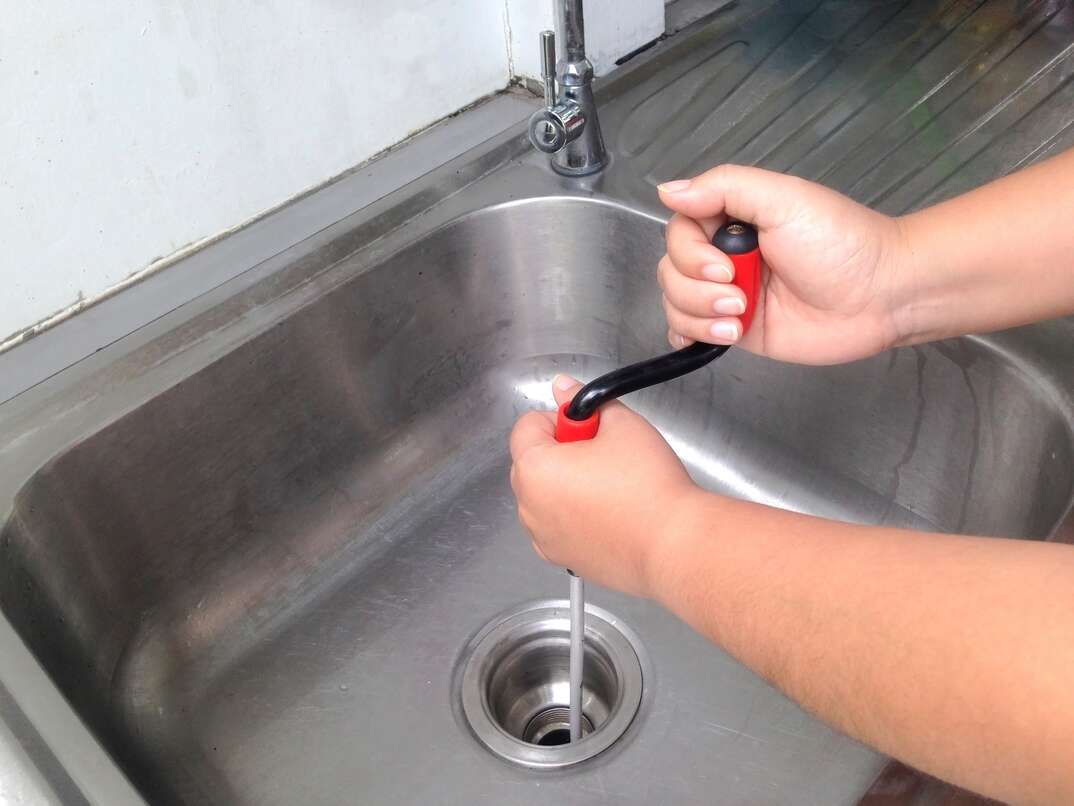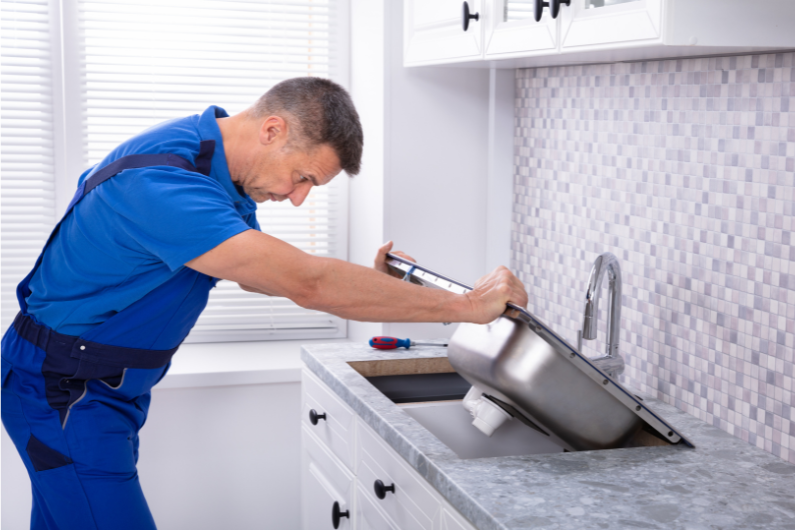Easy Ways To Address A Slow-Draining Sink
Easy Ways To Address A Slow-Draining Sink
Blog Article
Here down the page you'll find a lot of good facts in relation to 7 Ways To Fix A Slow-Draining Sink Before You Call A Plumber.

Introduction
We have actually all been there: You're cleaning your teeth or washing your hands, and you see the water merging in the sink. Instead of swiftly swirling down the tubes, it remains, turning your once-refreshing early morning routine right into a mini swamp scene. A slow-draining sink isn't just aggravating; it's usually a sign of bigger plumbing problems hiding under the surface area. Fortunately is that many slow-draining sinks can be fixed with a little know-how, a couple of basic devices, and some patience. All set to tackle this job head-on? Allow's roll up our sleeves and dive right in.
Understanding the Causes of a Slow-Draining Sink
Prior to you begin poking around in your pipes, it aids to know what could be triggering the stagnation. Understanding the source makes it easier to choose the ideal fix.
Tools and Products You'll Require
The right devices make all the difference. Thankfully, you won't need a totally equipped plumber's van to finish the job.
Step-by-Step Guide to Dealing With a Slow-Draining Sink
Currently, allow's enter the nitty-gritty. This step-by-step process will direct you through easy strategies to recover your sink's drainage.
Step 1: Get Rid Of and Clean the Stopper
Usually, the stopper (that tiny plug you push down to obstruct water) is the very first offender. Remove it very carefully and clean off any type of hair or crud entraped around its base. Wash it thoroughly prior to placing it back in position.
Action 2: Make Use Of a Bettor to Displace Debris
Got that plunger prepared? Setting it over the drainpipe and provide it a couple of firm pumps. The idea is to create suction that can loosen any kind of clog. If you see littles particles drifting up, you get on the appropriate track.
Step 3: Try a Drain Serpent or Cord Hanger
If the bettor does not do the trick, it's time to bring out the drainpipe snake. Gently feed it into the drainpipe and twist as you go. You might really feel some resistance-- that's most likely the clog. Keep twisting and pulling till you get rid of the blockage. If you don't have a drain snake, a corrected the alignment of cable wall mount can work in a pinch.
Step 4: Apply a DIY Drain Cleanser
An all-natural cleaner made from baking soda and vinegar can break down recurring gunk. Pour half a cup of baking soft drink right into the drainpipe, followed by half a cup of vinegar. Allow it fizz for around 15 mins, then flush with hot water. This chain reaction commonly does marvels for minor blockages.
Step 5: Rebuild and Examine the Sink
Put everything back together and run the faucet. Does the water currently swirl down the drain at a reputable speed? If yes, give yourself a pat on the back. If not, do not misery-- there are still a few more dress up your sleeve.
Necessary Tools for DIY Fixes
A bettor is your best beginning point. A small, sink-sized plunger creates suction that can remove minor blockages. For more relentless clogs, a drainpipe snake (occasionally called a plumbing's auger) works wonders. A set of gloves, a flashlight, and perhaps a set of protective goggles are likewise convenient.
Recommended Cleansing Solutions
Light dish soap and hot water can aid break down oily build-up. A combination of cooking soft drink and vinegar is a reliable natural remedy, and chemical cleaners offer a more environmentally friendly approach. Keep chemical drainpipe cleaners as a last resort, as they can be extreme on your pipelines.
Usual Perpetrators Behind Slow Water Drainage
So, what's clogging points up? Generally, it's a mixture of day-to-day particles-- assume hair, soap scum, toothpaste residue, and remaining food bits. Gradually, these tiny bits collect and hold on to the pipe walls, slowly narrowing the flow and making it harder for water to pass through. In some cases, mineral deposits from difficult water can likewise include in the substance, producing the best tornado for stubborn blockages.
When is it Time to Take Action?
If you discover the water draining pipes slower than normal, it's an excellent concept to interfere faster as opposed to later. Waiting as well long could cause complete obstructions, undesirable odors, or even pipeline damage. If the water takes greater than a few secs to remove after switching off the faucet, consider it a red flag and prepare yourself to place on your DIY hat.
Safety First: Safety Measures and Prep work
Prior to you launch into unclogging setting, think of safety. You're taking care of possibly unclean water and particles, so slip on a set of handwear covers. If you're making use of chemical cleansers, make certain the area is well-ventilated and adhere to the guidelines on the tag.
Protective Equipment and Work Area Setup
Set some old towels or dustcloths around the sink location to catch sprinkles. Eliminate any type of products that might get in your way, like soap dispensers or toothbrush owners. Make sure you have good lighting-- grab a flashlight if required.
Alternate Techniques for Stubborn Clogs
Not all blockages are produced equal. If your sink still rejects to work together, consider these alternate solutions.
Sodium Bicarbonate and Vinegar Method
We already touched on this, however it's worth noting once more. This gentle, environment-friendly approach is more secure than chemical cleansers and frequently quite efficient.
Enzymatic Drain Cleansers
Enzyme-based cleansers utilize all-natural bacteria to absorb raw material. They're a superb choice if you're seeking to stay clear of harsh chemicals. Simply bear in mind, they may take a bit longer to work their magic.
Chemical Drainpipe Cleaning Company: Advantages And Disadvantages
Chemical cleansers can blow up via challenging clogs fast, but they're not without drawbacks. They can create warmth and fumes, damages pipes if used exceedingly, and posture ecological dangers. Use them moderately, and constantly comply with the directions meticulously.
Safety Nets to Keep Your Sink Flowing
Avoidance is the most effective treatment. By embracing a few simple habits, you can keep your sink from decreasing to begin with.
Routine Cleaning Behaviors
Wipe down the sink basin and fixture area consistently. Remove hair or food particles prior to they have a possibility to wash down the drain.
Avoiding Dangerous Materials Away
Reconsider prior to unloading coffee premises, oil, or coarse vegetable scraps down the sink. These wrongdoers hold on to pipe wall surfaces, producing obstructions in time.
Regular Upkeep Checks
Schedule a fast regular monthly evaluation. Run warm water with the sink for a few mins, focusing on the flow. If it seems slow-moving, act quickly before it ends up being a full-blown clog.
When to Call a Professional Plumbing Professional
Occasionally, despite how tough you try, that clog just will not move. That's when it's time to generate the pros.
Signs That Show an Extra Serious Concern
If your sink drains pipes slowly in spite of numerous attempts, or if you discover water backing up in various other components (like your shower or bathroom), you may have an extra significant plumbing concern prowling deeper in the system.
Balancing DIY Efforts with Expert Help
While do it yourself can conserve you money and offer a feeling of success, there's no embarassment in calling an expert. An expert plumbing can examine your entire plumbing arrangement, ensuring there's no underlying damage or long-lasting trouble that can cost you more down the road.
Contrasting Prices and Long-Term Solutions
Prior to making a decision, take into consideration the big picture. A low-cost, quick fix might fix the problem briefly, however buying an extra irreversible option might conserve you cash and stress and anxiety in the future.
Evaluating the Expenses of Do It Yourself vs. Professional Repairs
Do it yourself fixes commonly set you back bit greater than the rate of a bettor or a container of cooking soft drink. Specialist solutions, on the other hand, featured a cost yet might protect against repetitive concerns and costly repair work later.
Investing in Top Quality Fixtures and Upgrades
If your sink's layout adds to frequent obstructions, it may be worth upgrading to higher-quality fixtures or changing the plumbing format. Consider this a financial investment in your house's performance and comfort.
Conclusion
A slow-draining sink can seem like a minor inflammation, however it's often a sign that your pipes needs a little tender loving care. By recognizing the source, using the right devices and techniques, and devoting to straightforward safety nets, you can keep your sink streaming easily. And when all else falls short, never ever think twice to employ a professional-- your home's pipes deserves the investment in care and maintenance.
Three Common Ways to Fix a Slow Drain
Baking Soda Method
Boil a full pot of water. Measure out cup of baking soda and pour it down the drain. Then take cup of the magical cleansing substance known as white vinegar and drop that down there too. Allow the mixture to fizz in the drain for five minutes as the vinegar and baking soda combine. Now dump in that whole pot of boiling water. This combination of cleaning substances should clear out anything that is causing your sink to drain slowly. If it doesn t...
Zip-It
If the baking soda method doesn t clear out your drain, it may be because a significant amount of hair and/or other debris has collected there and you need to remove it. Purchase a Zip-It tool at any home improvement or hardware store and insert it into your drain. It will catch any collected hair or debris that s blocking the flow of water. Pull it out. If it s got a big clump of hair, etc. on the end, you ve probably got your culprit.
Drain Cleaner
If these methods don t work, there is the standard drain cleaner that you can also buy in a hardware store or even your local grocery store. It s better if you can use a household solution, but these drain cleaners often work in a pinch. They re very simple to use. You generally just dump them in your drain and wait. If even this method is not effective, it may be time to call the plumber.
https://www.mrrooter.com/oneida/about-us/blog/2017/july/three-common-ways-to-fix-a-slow-drain/

As an avid reader on Solved! How to Fix a Slow Sink Drain, I figured sharing that excerpt was smart. You should pause to promote this blog entry if you appreciated it. I cherish your readership.
Visit Our Site Report this page